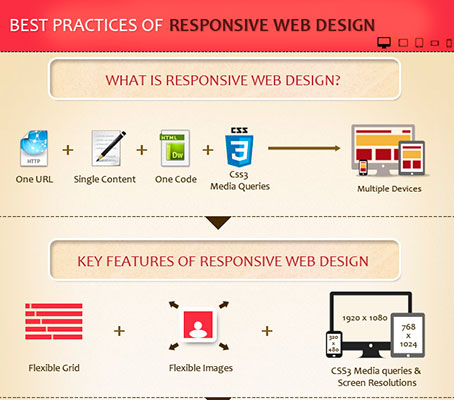Basic Elements Of Web Design: Guidelines For Developing A User-Centric Site
Basic Elements Of Web Design: Guidelines For Developing A User-Centric Site
Blog Article
Developed By-Aguirre Thorpe
When it involves web site style, making certain user-friendliness is vital. From responsive design to streamlined navigating, every element plays an essential duty in developing a site that deals with your target market's demands. However what regarding the better information that can make or damage a user's searching experience? Remain tuned as we uncover some often-overlooked ideas that can elevate your website's use to the next level, making it really stand out in the electronic landscape.
Value of Responsive Layout
Responsive design is an essential element of contemporary internet site development. Ensuring your website is receptive ways that it can adjust to different screen sizes and tools, supplying a smooth experience for users.
With the enhancing use of smart devices and tablet computers to access the internet, having a receptive style is vital for reaching a bigger audience. It helps in enhancing individual experience by making your site easy to navigate and keep reading any type of tool.
Furthermore, receptive design can favorably affect your online search engine positions, as online search engine like Google focus on mobile-friendly internet sites. By having a receptive design, you're additionally future-proofing your site, as new tools with differing display dimensions continue to arise.
Simplify Navigating Structure
To boost customer experience and help with easy access to details on your website, enhancing the navigating framework is paramount. When making your website, concentrate on producing a clear and intuitive navigation food selection that aids visitors find what they're looking for quickly.
Restriction the number of food selection things to the essentials, grouping associated web pages together to stay clear of frustrating customers. Usage detailed tags that clearly suggest the web content of each web page, making it simpler for individuals to understand where each link will take them.
Consider executing dropdown menus for subcategories to prevent jumbling the major navigation bar. Additionally, include a search bar prominently on the page for users that prefer searching for specific details.
Focus on mobile responsiveness in your navigating design to make certain easy accessibility on all gadgets.
Maximize Page Load Rate
Improving web page load speed is essential for retaining site visitors on your website. Slow-loading https://smallbiztrends.com/2022/04/creating-well-rounded-seo-strategy.html discourage customers and can lead to high bounce rates. To enhance page load rate, start by optimizing photos. Press photos without endangering high quality to minimize their data dimensions.
Additionally, allow browser caching to keep often accessed sources locally, speeding up tons times for returning visitors. Minify CSS, JavaScript, and HTML documents by getting rid of unneeded characters, comments, and format, improving load speed.
Take into consideration utilizing a content distribution network (CDN) to disperse your website's web content throughout several web servers worldwide, reducing latency for users accessing your website from different locations. Finally, restrict the use of third-party manuscripts and plugins, as they can considerably influence tons times.
Final thought
In conclusion, by incorporating receptive style, streamlining navigation, and maximizing page tons speed, you can create an user-friendly internet site that attract a broader audience and boosts user experience. ada wcag 2.0 aa guarantee that site visitors can conveniently accessibility and navigate your site across different tools, causing raised involvement and satisfaction. By focusing on these essential facets, you can construct a successful site that keeps individuals returning for even more.
